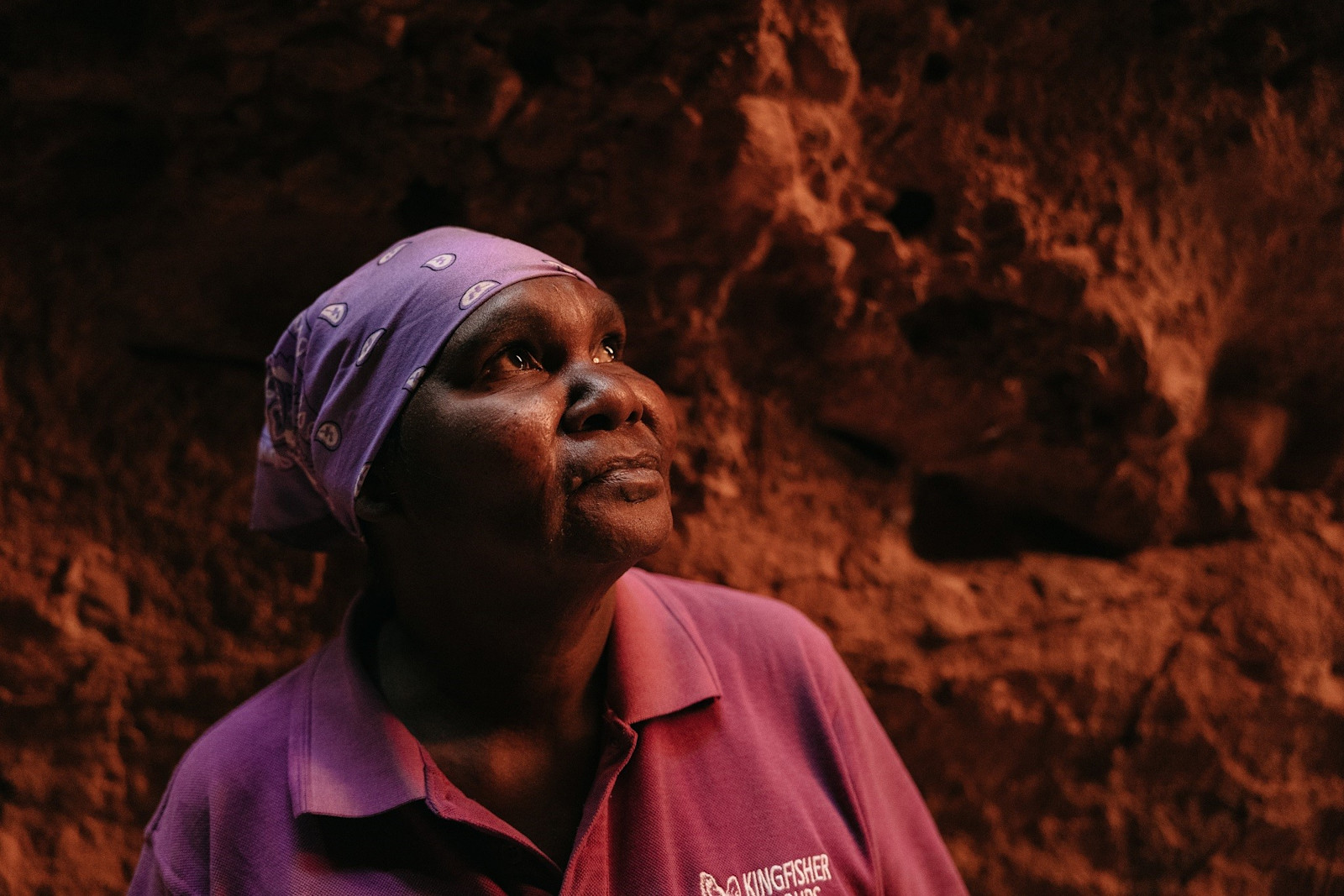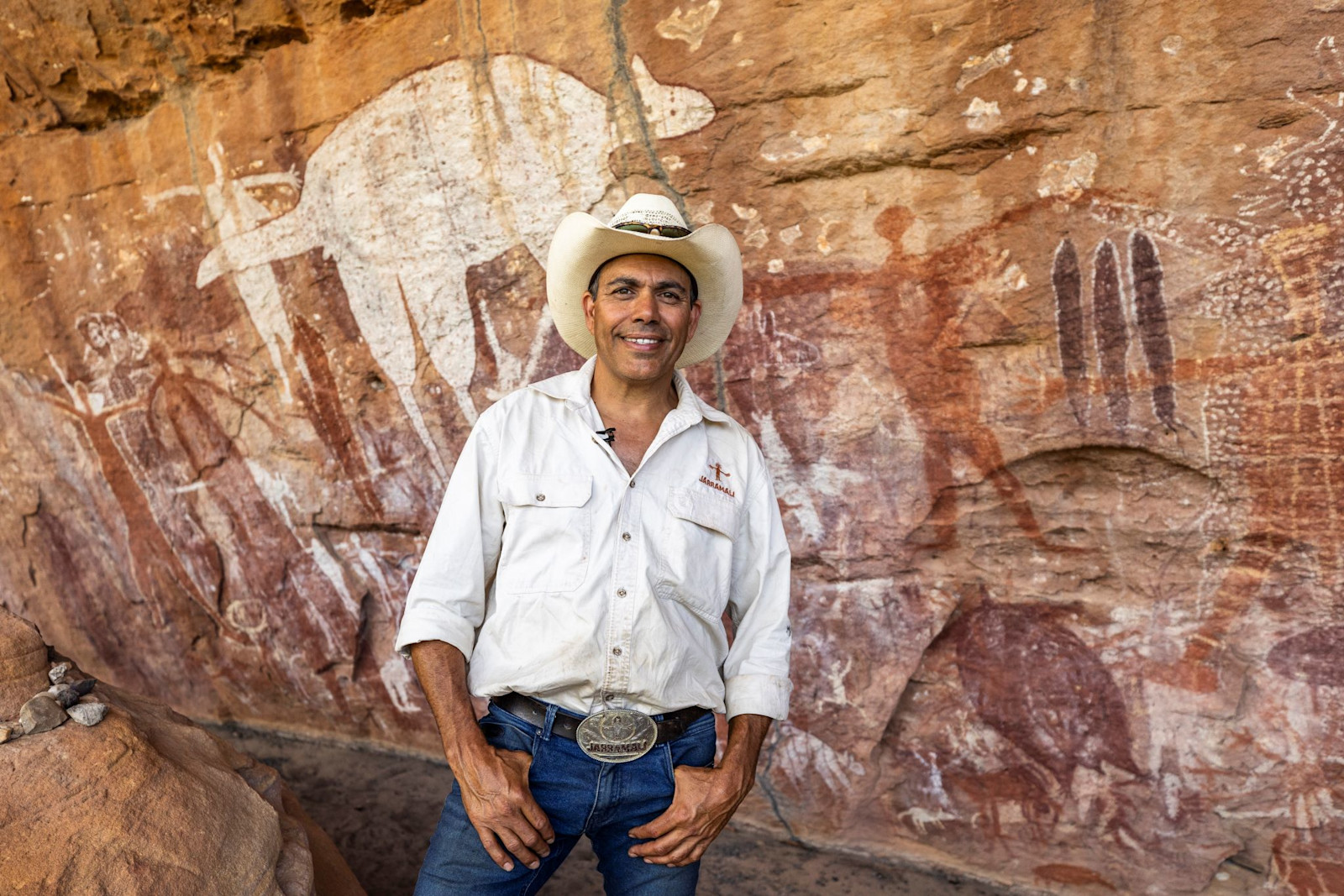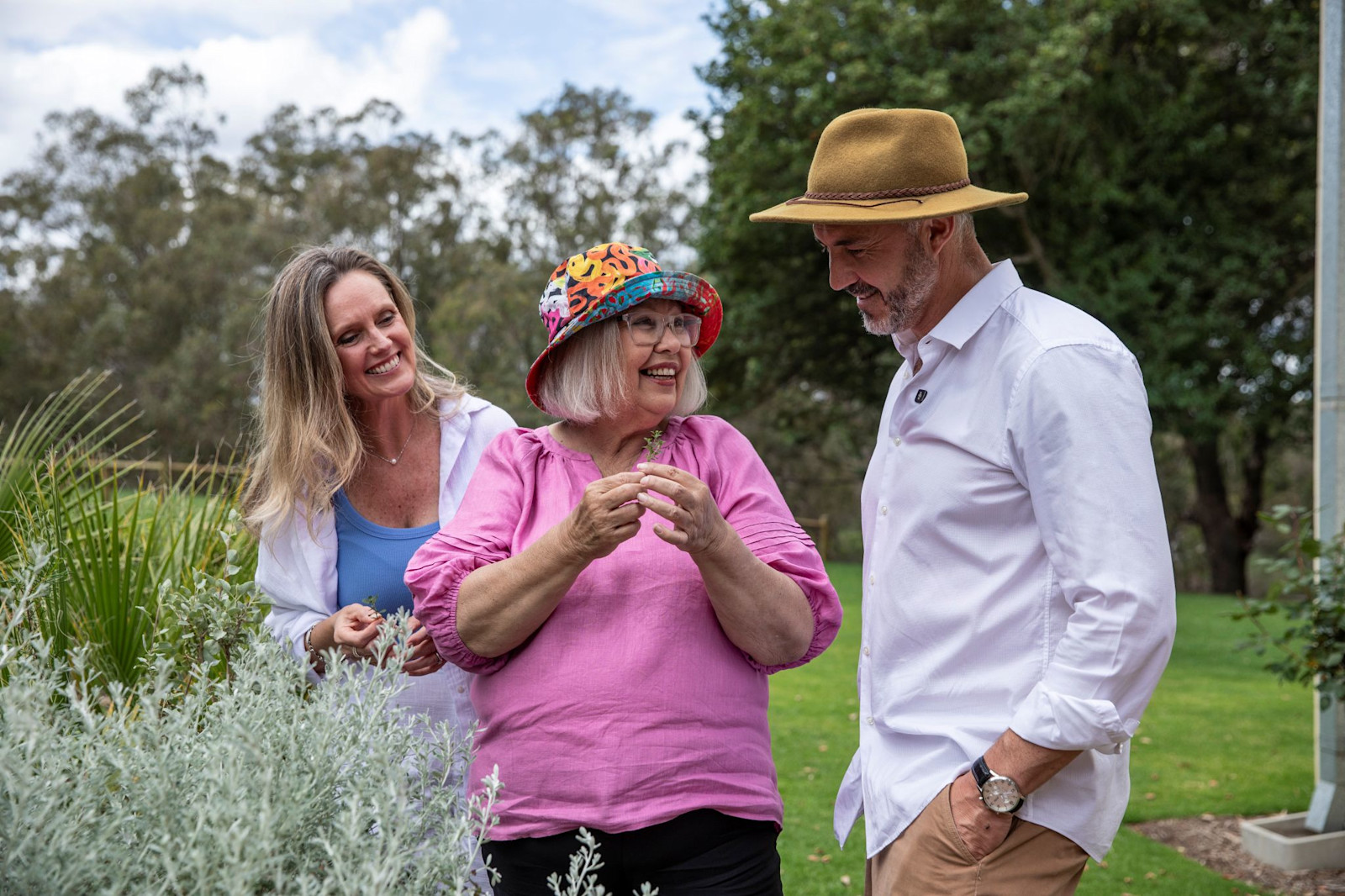Guide to the kangaroo in Aboriginal cultures
Australia’s most iconic animal, and pictured on the country’s coat of arms, the kangaroo is not only the world’s largest marsupial, but also an important part of Aboriginal cultures.

Kangaroos, Wilpena Pound Resort, Flinders Ranges, South Australia © Tourism Australia
What are kangaroos?
Kangaroos need little introduction – these marsupials are legendary across Australia, and indeed much of the world. And they outnumber people by 18:1, with more than 500 million hopping across the country. Just like humans, they come in many forms, with an estimated 60 different species ranging from the size of a rabbit to the two-metre (six-foot) red kangaroo. Some jump in enormous strides, others can climb trees; some live in the outback and others can be found cooling off in the ocean… one thing they all have in common – they are iconic.

Kangaroo depicted on rock art, Ngurrangga Tours, Pilbara, Western Australia
Why are kangaroos significant to Aboriginal culture?
Whether depicted in ancient rock art and dot paintings, channelled through dance and music in ceremonies, represented as a Totem (spirit animal), or hunted as a source of food and shelter, kangaroos have always been culturally and spiritually significant to Indigenous peoples across Australia.
The word ‘kangaroo’ comes from the Aboriginal word ‘gangurru,’ which is the name given to eastern grey kangaroos by the Guuga Yimithirr people of Queensland’s tropical north. And these migratory marsupials have long been respected by Indigenous communities for their important role within the environment. They play a prominent role in the regeneration of the Australian bush, and are responsible for the survival of other species of native wildlife including koalas. “We can follow their tracks and learn whatever the kangaroo is taking and eating on a particular track, and know it’s good to also eat,” says Juan Walker of Walkabout Cultural Adventures in Queensland. “They’re our explorers, telling us what's on that land and what we can learn from that land like where the food and water sources are.”
They, themselves, are also an important food source, their meat low in fat and high in iron. Aboriginal communities would typically hold a ceremony when hunting them, and use every part of the animal, from the skin to the meat and bones.

bush-tucker-koomal-dreaming-margaret-river-wa
Where can I see (and taste) a kangaroo?
You won’t forget the first time you spot a kangaroo in the wild – they usually bound about in mobs, and keep their distance while eyeing you off. There are plenty of ways to see them, and hear about their traditional significance, with an Aboriginal guide – keeping in mind that they’re wild animals, so a sighting is never guaranteed.
The guided walk through a rehabilitated wildlife reserve at Victoria’s Tower Hill with Worn Gundidj @ Tower Hill allows for up-close encounters with iconic Australian animals such as kangaroos; you may also spot emus, koalas and wallabies. And they roam freely in other areas, including North Stradbroke Island / Minjerribah in Queensland (visit with Yura Tours), and around Wilpena Pound Resort in the Ikara-Flinders Ranges National Park, north of Adelaide in South Australia.

Guide Johnny Murison showing rock art to guests. Jarramali Rock Art Tours, QLD © Tourism Australia
A virtual orchestra of didgeridoos echo through the rainforests of Tropical North Queensland during the Pamagirri Aboriginal Experience at Rainforestation Nature Park near Cairns / Gimuy. Talented musicians can imitate the sounds and motions of kangaroos and kookaburras – after the show, you can have a go at doing the same. Also in Queensland, the Quinkan rock art sites are form one of the largest outdoor galleries in the world. Sign up for an experience with Jarramali Rock Art Tours and prepare to see “every Aboriginal dietary item” depicted on the sandstone walls, according to guide Johnny Murison. “The animal figures include kangaroos, but you’ll also see crocodiles, emus, echidnas, barramundi, catfish and birds. I can show you the whole structure of our society by looking at that gallery,” says Johnny.
When it comes to mealtime, the alfresco rainforest feast at Flames of the Forest’s Aboriginal Cultural Experience in Tropical North Queensland spotlights seasonal native specialties on the menu, which might include smoked crocodile rillettes with salsa verde, and lemon-myrtle-infused kangaroo loin on a bed of wild rocket and toasted macadamias. Meanwhile, south-west of Perth / Boorloo in the lauded Margaret River wine region, Josh Whiteland of Koomal Dreaming dishes up traditional foods such as kangaroo, emu, quandong, emu plum and saltbush during a gourmet lunch option.












